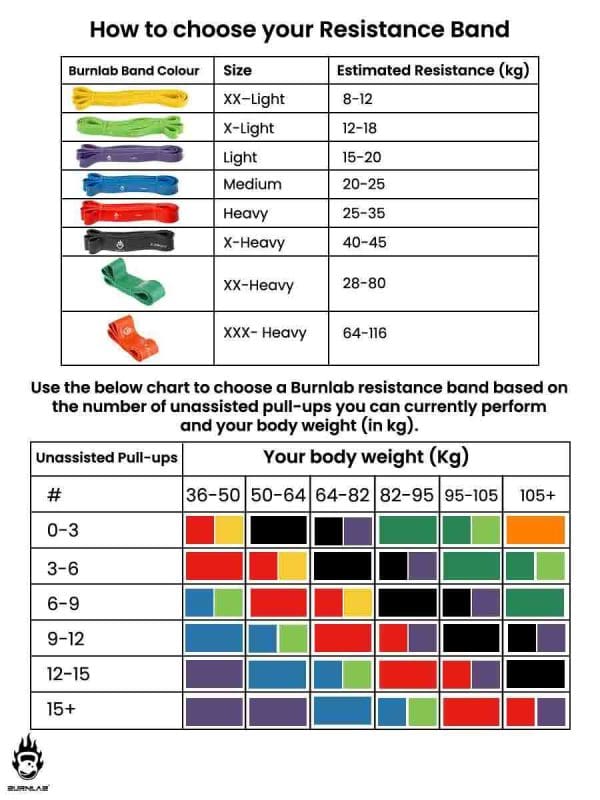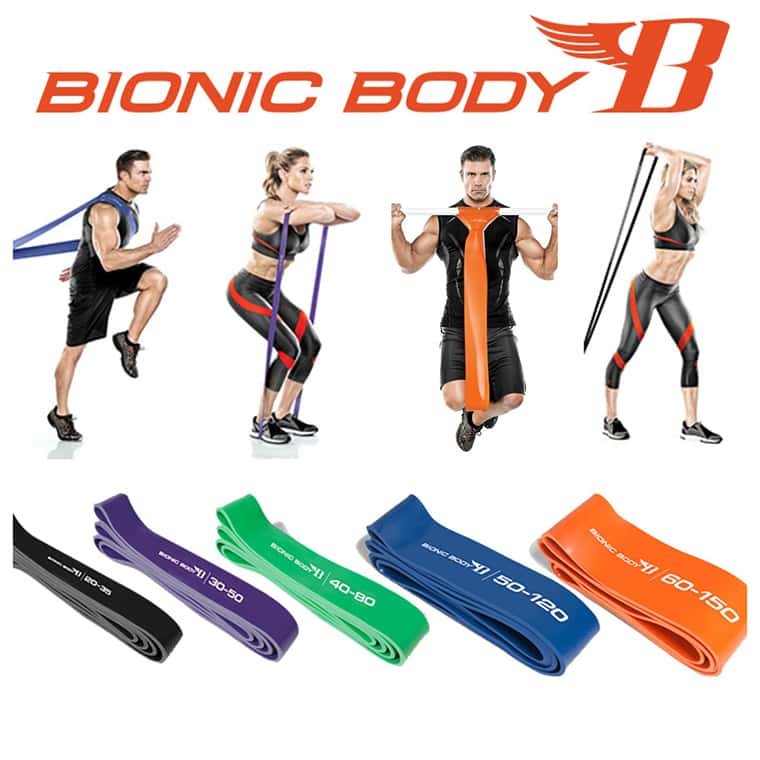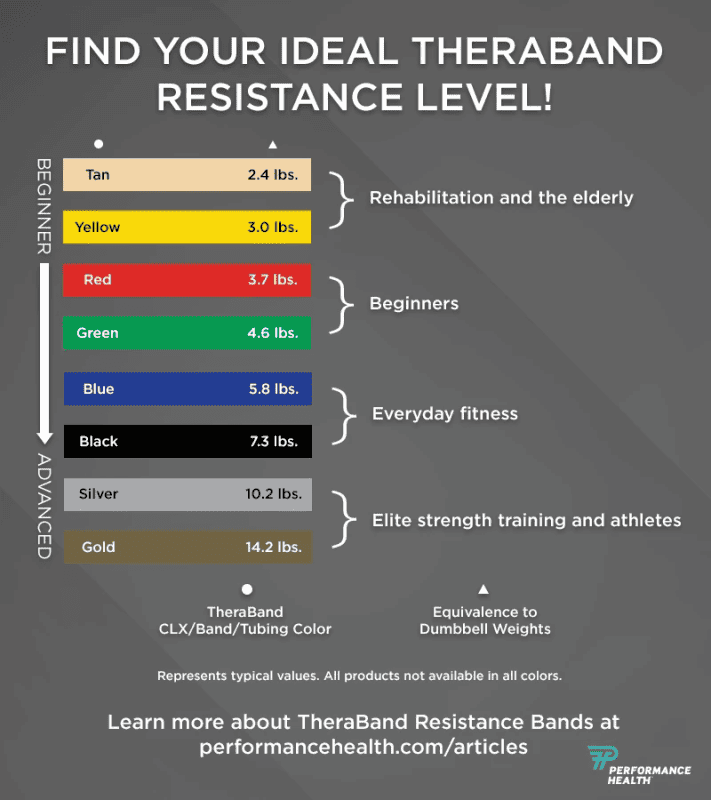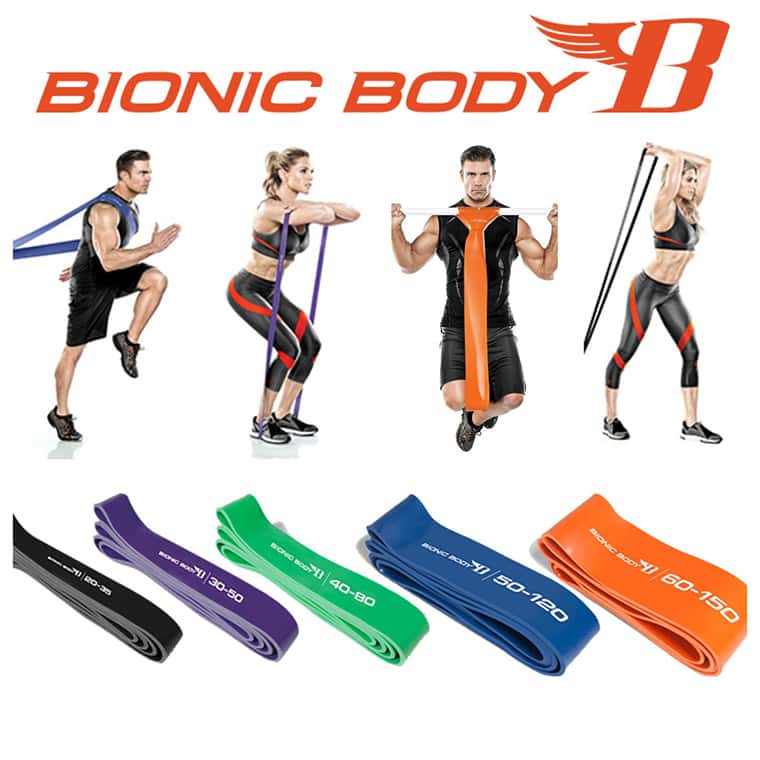Fitness
Choosing the Right Resistance Band Weight
Choosing the right resistance band weight is crucial to ensuring an effective workout routine. With a wide array of options available, it can be overwhelming to determine the suitable resistance for your fitness level. However, by understanding your goals and considering factors such as strength, experience, and desired intensity, you will be able to select the perfect resistance band weight that will challenge and push you towards achieving your desired results.
Understanding Resistance Bands
Resistance bands are versatile and affordable exercise tools that can help you strength train, improve muscular endurance, rehabilitate from injuries, or simply enhance your general fitness or toning. They come in a variety of types, resistance levels, and lengths, making it important to choose the right band for your specific fitness goals and current strength level. By understanding the different types of resistance bands, considering your fitness goals, matching your fitness level, and assessing factors such as band length and tension, you can make an informed decision when choosing the right resistance band weight.
Types of Resistance Bands
There are several types of resistance bands available, each with its own unique characteristics. The most common types are loop bands, therapy bands, and figure-eight bands.
Loop bands are continuous bands that form a loop or circle. They are often used for lower body exercises and are great for targeting specific muscle groups such as the glutes, thighs, and calves. Therapy bands, on the other hand, are long, flat bands that can be wrapped around different body parts to provide resistance. They are commonly used for upper body exercises and are excellent for targeting the arms, shoulders, and back. Figure-eight bands, as the name suggests, resemble the shape of the number eight and provide resistance when stretched apart. They are versatile and can be used for both upper and lower body exercises.
Benefits of Resistance Bands
Resistance bands offer numerous benefits that make them a popular choice among fitness enthusiasts. First and foremost, they are highly portable and lightweight, making them perfect for home workouts, travel, or when you have limited space. They are also gentle on the joints, reducing the risk of injury compared to heavy weights. Additionally, resistance bands allow for a wide range of motion, activating multiple muscle groups simultaneously and improving stability and balance. They provide adjustable resistance levels, accommodating users of all fitness levels. Finally, resistance bands can be used for various purposes, including strength training, muscular endurance, rehabilitation, and general fitness, making them a versatile choice for any fitness routine.
Factors to Consider When Choosing Resistance Bands
Choosing the right resistance band weight involves considering several factors. These include your fitness goal, current strength level, band length and tension, as well as the brands and quality available in the market. By taking the time to assess each of these factors, you can make an informed decision that maximizes the effectiveness and safety of your resistance band workouts.
Determining Your Fitness Goal
Before selecting a resistance band weight, it’s essential to determine your fitness goal. This will help guide you in choosing the appropriate band that aligns with your specific objectives. Below are some common fitness goals and the corresponding resistance band recommendations:
Strength Training
If your goal is to build strength and increase muscle mass, you will need resistance bands with higher weight levels. Opt for medium to heavy resistance bands that challenge your muscles and allow you to perform 8-12 repetitions with proper form before muscle fatigue sets in.

Muscular Endurance
For improving muscular endurance, which involves extending the duration of muscle contractions over an extended period, lighter resistance bands are suitable. Choose bands with light to medium resistance that allow you to perform 12-20 repetitions without compromising proper form.
Rehabilitation or Physical Therapy
If you’re recovering from an injury or undergoing physical therapy, it’s crucial to choose resistance bands with lighter weight levels. This will help you gently rehabilitate your muscles and regain strength without putting excessive strain on the affected area. Light to medium resistance bands are recommended for this purpose.
General Fitness or Toning
If you’re primarily focused on overall fitness and toning your muscles, medium to heavy resistance bands would be ideal. These bands offer enough resistance to challenge your muscles while helping you achieve a lean and toned physique.
Resistance Band Weight Levels
Resistance bands come in various weight levels, each representing a different level of resistance. It’s important to select the appropriate weight level to ensure your workouts are effective and safe. The commonly available resistance band weight levels are:
Light Resistance Bands
Light resistance bands offer the least amount of resistance and are suitable for beginners or individuals recovering from injuries. They are also great for targeting small muscle groups or engaging in exercises that require more mobility.

Medium Resistance Bands
Medium resistance bands provide a moderate level of resistance, making them ideal for individuals with a moderate fitness level or those looking to build muscle endurance. They can be used for a wide range of exercises for both upper and lower body workouts.
Heavy Resistance Bands
Heavy resistance bands provide significant resistance and are perfect for individuals looking to build strength and muscle mass. They are also suitable for advanced trainers who want to challenge themselves and take their workouts to the next level.
Extra-Heavy Resistance Bands
Extra-heavy resistance bands offer the highest level of resistance and are designed for advanced users who have developed significant strength. These bands provide an intense workout and are great for powerlifting exercises or individuals who want to push their limits.
Matching Your Fitness Level
In addition to considering your fitness goal, matching your fitness level is crucial for selecting the right resistance band weight. This ensures that you are working within your capabilities and avoiding any unnecessary strain or risk of injury. The following guidelines can help you determine your fitness level and choose an appropriate resistance band weight:
Beginners
If you’re new to resistance training or have been inactive for a while, it’s recommended to start with light to medium resistance bands. This will allow your muscles to gradually adapt to the resistance and minimize the risk of overexertion or injury. As you progress and build strength, you can gradually increase the resistance level.

Intermediate
Intermediate fitness levels indicate a moderate level of strength and experience with resistance training. Individuals in this category can comfortably use medium to heavy resistance bands and challenge their muscles to support further growth and development.
Advanced
Advanced fitness levels represent individuals who have built significant strength and have extensive experience with resistance training. These individuals can safely use heavy to extra-heavy resistance bands to push their limits and continue to improve their strength and performance.
Consider Your Current Strength Level
When choosing a resistance band weight, it’s essential to consider your current strength level across different areas of your body. This will ensure that you select bands that provide sufficient resistance for all muscle groups. You can assess your upper body strength, lower body strength, and core strength individually to determine the appropriate resistance band weight for each muscle group.
Upper Body Strength
Evaluate your upper body strength by performing exercises such as bicep curls, tricep extensions, and shoulder presses using resistance bands of different weights. Choose a weight level that allows you to perform the exercises with proper form and without excessive strain.
Lower Body Strength
Assess your lower body strength by engaging in exercises such as squats, lunges, and leg presses using resistance bands of different weights. Determine the weight level that challenges your lower body muscles while ensuring you can complete the movements with proper technique.

Core Strength
Evaluate your core strength by performing exercises that engage the abdominal muscles, such as plank variations and Russian twists, using resistance bands of varying weights. Select a band weight that provides enough resistance to challenge your core muscles but allows you to maintain stability and control throughout the exercises.
Band Length and Tension
The length and tension of a resistance band play a vital role in determining the effectiveness and safety of your workouts. Understanding the different options available will help you select the most suitable band for your needs.
Short Bands
Short bands are typically around 12-18 inches in length and are primarily used for upper body exercises that require limited range of motion. They are ideal for targeting specific muscle groups and can provide higher tension, making them suitable for individuals looking for a more challenging workout.
Long Bands
Long bands, usually around 50-60 inches in length, offer greater versatility as they can be used for both upper and lower body exercises that require more extensive range of motion. They are excellent for engaging multiple muscle groups simultaneously and provide varying levels of tension depending on the positioning and length of the band.
Tension Levels
Resistance bands come in different tension levels, which determine the amount of resistance they provide. The tension level is typically indicated by a color, with lighter bands usually marked by lighter shades and heavier bands indicated by darker shades. When choosing the right resistance band weight, consider your fitness level, muscular strength, and the level of challenge you want to incorporate into your workouts. It’s recommended to have a variety of bands with different tension levels to allow for progression as your strength improves.
Resistance Band Brands and Quality
When investing in resistance bands, it’s important to consider the brands and quality available in the market. Different brands offer varying levels of durability, longevity, and overall quality, which can greatly affect your workout experience. Here are some factors to consider when evaluating resistance band brands:

Researching Different Brands
Take the time to research different resistance band brands and compare their features, customer reviews, and overall reputation. Look for brands that have a strong track record of producing high-quality products and prioritize customer satisfaction.
Reading Customer Reviews
Reading customer reviews can provide valuable insights into the quality and performance of different resistance bands. Pay attention to reviews that highlight durability, longevity, ease of use, and the overall effectiveness of the bands.
Considering Durability and Longevity
Durability and longevity are critical factors to consider when choosing resistance bands. Look for bands made from high-quality materials, such as natural latex or fabric, that can withstand regular use without losing their elasticity or breaking.
Trial and Error
Selecting the right resistance band weight may involve some trial and error. Everyone’s body and fitness level are unique, so it’s essential to listen to your body’s feedback and make adjustments accordingly. Here are some tips to help you navigate this process:
Starting with the Lightest Band
If you’re unsure about the appropriate resistance band weight, start with the lightest band available. Begin your workouts with this band and gradually increase the resistance as your strength improves and your muscles adapt to the workload.
Progressive Overload
Progressive overload is the principle of gradually increasing the demands on your muscles to stimulate growth and development. As you become comfortable with a particular resistance band weight, consider progressing to the next level to continue challenging your muscles and promoting further strength gains.
Listening to Your Body
It’s crucial to listen to your body and pay attention to any discomfort, pain, or excessive fatigue during your resistance band workouts. If a specific band weight feels too challenging or causes discomfort, reduce the resistance level and gradually work your way up as your body becomes more conditioned.
Consulting a Fitness Professional
If you’re unsure about which resistance band weight is suitable for you or need guidance in using resistance bands effectively, consider consulting a fitness professional. Personal trainers or physical therapists can provide personalized advice, tailor exercises to your specific needs, and ensure you’re using the correct form and technique.
Personal Trainers
Personal trainers are experts in designing effective workout programs and can assist you in selecting the right resistance band weight based on your goals and fitness level. They can also provide guidance on proper exercise execution, progression, and modifications.
Physical Therapists
If you require rehabilitation or have specific physical limitations or conditions, consulting a physical therapist can be beneficial. They can help you choose the appropriate resistance band weight and design a customized program to aid in your recovery or improve your physical function.
Final Tips for Choosing the Right Resistance Band Weight
Choosing the right resistance band weight is an important decision that can greatly impact the effectiveness and safety of your workouts. To ensure you make the best choice, keep the following tips in mind:
Gradually Increasing Resistance
As you become stronger and more comfortable with a particular resistance band weight, gradually increase the resistance level to continue challenging your muscles. This progressive approach will help you avoid plateaus and keep your workouts effective.
Using Multiple Bands
Having a variety of resistance bands with different weights and tension levels will provide you with options for targeting various muscle groups and accommodating your strength level across different exercises. Utilizing multiple bands can increase the versatility and diversity of your workouts.
Regularly Assessing Your Progress
Regularly assess your progress by tracking your strength gains and overall fitness improvements. If a certain resistance band weight starts to feel too easy, it may be time to advance to the next weight level to ensure continued growth and development.
By understanding the different types of resistance bands, considering your fitness goals, matching your fitness level, assessing band length and tension, researching brands and quality, and utilizing trial and error along with professional guidance, you can confidently choose the right resistance band weight that suits your needs and supports your fitness journey.




